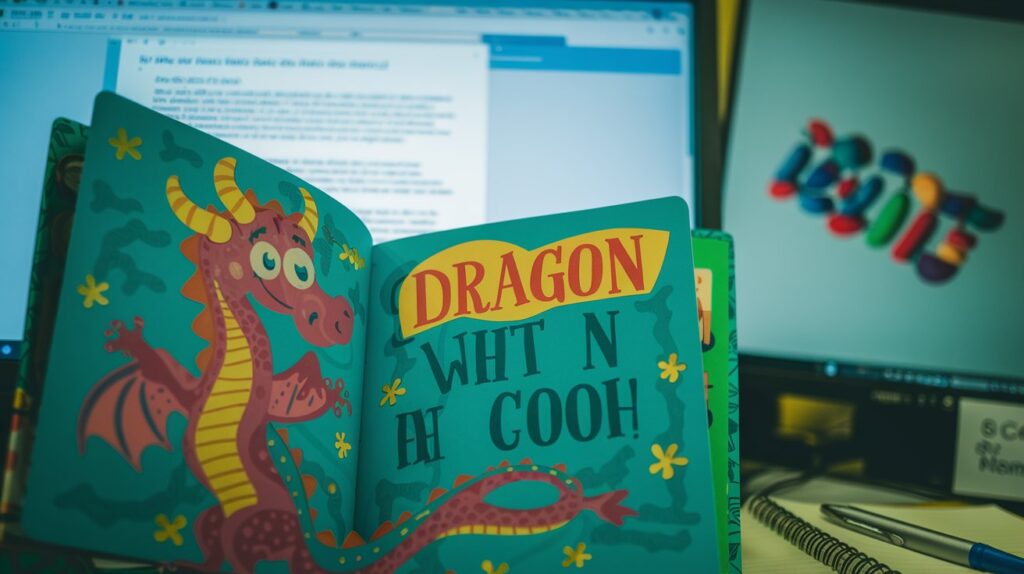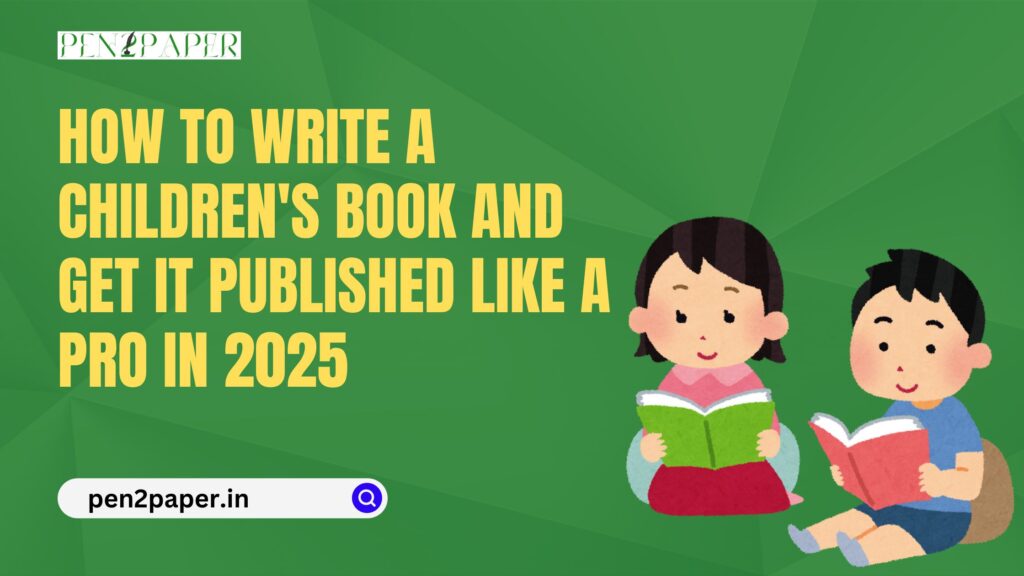Writing a children’s book is a dream for many aspiring authors. However, turning that dream into reality and getting your story published can be a challenging yet rewarding process. Whether you want to create an enchanting tale for toddlers or a thrilling adventure for middle-grade readers, understanding how to write a children’s book and get it published is essential to achieving success in this competitive field.
In this comprehensive guide, we will walk you through the step-by-step process of writing a captivating children’s book and share proven strategies to help you get it published in 2025. Let’s dive in!

Step 1: Understand Your Audience
Before you begin writing, it’s crucial to identify your target audience. Children’s books cater to different age groups, each with distinct preferences and developmental needs. Here’s a quick breakdown:
- Picture Books (Ages 3-6): Simple, engaging stories with colorful illustrations and minimal text.
- Early Readers (Ages 6-8): Easy-to-read books with a balance of text and illustrations.
- Chapter Books (Ages 7-10): Short chapters with relatable characters and slightly complex storylines.
- Middle-Grade Books (Ages 8-12): Longer narratives with rich themes and deeper character development.
Understanding your audience will help you tailor your story’s tone, language, and content effectively.
Step 2: Brainstorm Unique Ideas
The next step in learning how to write a children’s book and get it published is to brainstorm creative and original ideas. Children love stories that spark their imagination, teach valuable lessons, or make them laugh. Consider these tips:
- Draw from Personal Experiences: Childhood memories, family traditions, or personal anecdotes can inspire unique storylines.
- Think Like a Child: Observe how kids interact with the world and use their curiosity to create relatable characters.
- Explore Popular Themes: Adventure, friendship, overcoming fears, and self-discovery are timeless themes in children’s literature.
Step 3: Develop Memorable Characters
Children’s books are often driven by memorable characters. Whether it’s a brave little bunny, a mischievous kid, or a talking teapot, your characters should resonate with young readers. Here’s how to create impactful characters:
- Give Them Distinct Traits: Use quirks, habits, or unique qualities to make your characters stand out.
- Make Them Relatable: Children should see themselves or their aspirations reflected in your characters.
- Focus on Growth: Allow your characters to evolve and learn valuable lessons throughout the story.
Step 4: Craft an Engaging Storyline
A compelling storyline is the backbone of any successful children’s book. When writing, keep these elements in mind:
- Start with a Hook: Grab your readers’ attention from the very first line.
- Keep It Simple: Avoid overly complex plots that might confuse younger readers.
- Create Conflict: Introduce challenges or obstacles that your characters must overcome.
- Deliver a Satisfying Ending: Ensure your story concludes with a sense of resolution or a valuable lesson.
Step 5: Write with a Kid-Friendly Tone
The tone of your book should align with the age group you’re targeting. Use simple, engaging language that keeps young readers entertained. Consider the following tips:
- Use Vivid Descriptions: Bring your scenes to life with sensory details.
- Incorporate Humor: Light-hearted moments can make your story more enjoyable.
- Avoid Overly Long Sentences: Keep your writing concise and easy to follow.
Step 6: Collaborate with an Illustrator
If you’re writing a picture book or an illustrated story, teaming up with a talented illustrator is essential. The visuals in a children’s book play a significant role in capturing the attention of young readers. Choose an illustrator whose style complements your story’s tone and theme.
Step 7: Edit and Revise Your Manuscript
Revising is a critical step in perfecting your children’s book. Here’s how to polish your manuscript:
- Seek Feedback: Share your draft with beta readers, including parents and educators, to gather constructive feedback.
- Hire a Professional Editor: A professional editor can help refine your story, improve its flow, and ensure it’s free of grammatical errors.
- Read It Aloud: Reading your story out loud can help you identify awkward phrasing or inconsistencies.
Step 8: Research Publishing Options
Once your manuscript is ready, it’s time to explore publishing options. Here are the two primary paths:
Traditional Publishing
- Query Literary Agents: Prepare a compelling query letter and submit it to literary agents who specialize in children’s books.
- Submit Directly to Publishers: Some publishers accept unsolicited manuscripts for children’s books.
Self-Publishing
- Choose a Self-Publishing Platform: Platforms like Amazon Kindle Direct Publishing (KDP) or IngramSpark make it easy to publish your book.
- Invest in Professional Services: Hire professionals for book design, illustrations, and marketing.
- Promote Your Book: Leverage social media and author websites to reach your audience.
Step 9: Market Your Children’s Book
Marketing is crucial to ensure your book reaches its target audience. Consider these strategies:
- Build an Online Presence: Create a website and social media profiles dedicated to your book.
- Collaborate with Influencers: Partner with parenting bloggers or book reviewers.
- Host Events: Organize book readings or virtual launches to connect with readers.
- Offer Freebies: Provide free chapters or coloring pages as promotional materials.
Conclusion
Writing and publishing a children’s book can be a fulfilling journey when approached with creativity, dedication, and the right strategies. By following this guide on how to write a children’s book and get it published, you’ll be well-equipped to turn your story ideas into a published masterpiece that young readers will adore. Whether you choose traditional publishing or self-publishing, remember to stay persistent and believe in the magic of your story.
Start your journey today and let your imagination take flight!
